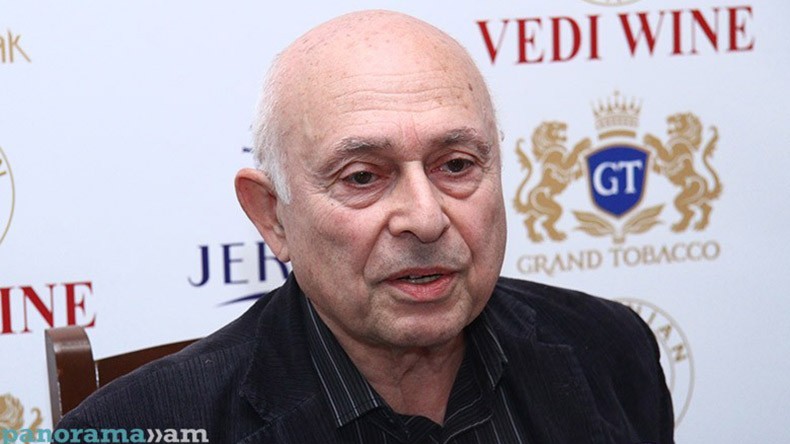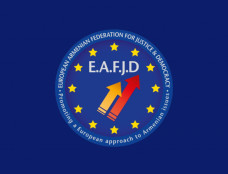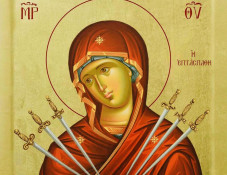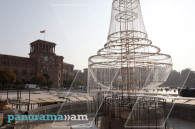
Rouben Galichian points out expression of aggression and projection in Azerbaijanis’ destruction of historic and cultural monuments
Among the psychological mechanisms that are subconsciously initiated at the time of stress are the mechanisms of ‘transfer of aggression’ and the subconscious ‘projection’ of the deed of aggression. Psychological defence mechanisms effectively act in reducing anxiety caused by unwanted and unacceptable situations, writes the famous cartographer Rouben Galichian in his book Historical and Geographical Falsifications of Azerbaijan, a historical, cultural and cartographical research based on a detailed analysis backed by documentary evidence.
According to Galichian, for self-defence and protection, the individual subconsciously begins to believe in unrealistic information and to live in a world of fantasies, transferring his or her frustration towards a third party, behaving from time to time aggressively towards that person. In the case of projection, this could be explained as the subconscious projection and/or shifting of blame and uneasy feelings of guilt resulting from an individual’s actions onto another person or object.
The behaviour of projection can be seen in national and international relations, Galichian writes. “The behaviour and propaganda campaigns of the authorities of the Republic of Azerbaijan have all the hallmarks of these psychological traits, which, surpassing the personal, have been elevated to a national level,” he points out.
According to Galichian, once the process of transferring and the following aggression, as well as the act of projection pass to wider groups of people, it first provokes them to turn another nation into a target for aggression caused by frustration, and absolve themselves from responsibility by putting the blame of their own criminal deeds on others.
“The vain search for ancient or medieval history has created a feeling of frustration among the Azerbaijani politicians, historians and scholars, which then has given rise to aggressive behaviour. This frustration manifests itself through the planned wholesale destruction and disfiguration of all cultural and religious monuments in their territory which are not seen as directly belonging to the present-day population of the land. The projection of guilt following these actions aims at ridding the Azerbaijani authorities of their own guilt for the destruction perpetrated, and blames their imaginary foes for wreaking similar acts,” Galichian writes and highlights that in this case the foes are the Armenians.
According to Galichian, the most prominent and extreme manifestation of aggression is the wholesale destruction and elimination of all the Armenian churches, monasteries and monuments in Nakhijevan, where the local population has been expressly forbidden to mention that Armenians ever existed or lived there.
“The guilt of the Nakhijevan monasteries and churches was that the Islamic structures there are few and plain, while the Armenian monuments exceeded them both in number and architecture,” Galichian notes.
The total extermination of the thousands of khachkars in the medieval cemetery in Jugha is another example.
Meanwhile, the book War Against Azerbaijan (published in Azerbaijan) includes many low-definition satellite photos of Armenian historical monuments and churches claiming them to be Azerbaijani-Albanian and blaming the Armenians for their destruction. The book contains a list of more than 1,800 buildings and monuments which the Armenians have destroyed, as per the authors’ claims. The reality is that the vast majority of these are modern dwellings destroyed as a result of the war fought in the territory. Furthermore it is often proved that those building are in fact still standing, Galichian writes.
Despite the numerous satellite photographs and tables included in the book, the authors of the book have not even been able to properly present their case, namely the ‘projection’ of blame onto the Armenians, Galichian writes. For example, the Islamic tombs in the cemetery of Aghdam are claimed to have been destroyed by the Armenians, and yet the satellite image in the book shows the very same monuments are upstanding, since their cast shadows are visible in the photos. In 2009, Galichian himself photographed the many intact tombs, that the book claims to have been destroyed, and included them in his other book, The Invention of History. The same is repeated for the Islamic tombs of Ughurlu Beg, Mir-Ali and Kangarli and countless others, which are open for inspection by all visitors.
Yet another example is the summer palace of Melik Haykazun (Azerbaijanis have renamed it ‘Hamza Sultan’), located in the village of Melikashen two kilometres south of the monastery of Tsitsernavank. War Against Azerbaijan claims the palace to have been destroyed by the Armenians, yet a visit to the site will show that the building was renovated and is used as a guesthouse.
“The above are typical examples of the application of psychological ‘projections’ and ‘transfers’ in larger, national contexts, whereby the Azerbaijani authorities blame the Armenians for most of the destruction actually committed by themselves. The psychological defence mechanisms prove that those who have feelings of guilt always search for scapegoats to relieve themselves of their own unwanted guilt,” Galichian highlights.
To be continued.
Born in Tabriz, Rouben Galichian is a descendant of refugees from Van who survived the Genocide. He received scholarship and studied engineering at Aston University, Birmingham (UK). Since in 1981, he started to study the rich cartographical heritage in the libraries of the UK and other European countries. His first research, Historic Maps of Armenia (in English), was published in 2004. It was a collection of maps from various libraries and museums in the world, where Armenia was noted, dating from the 6th century to the present times. His second book, Armenia in World Cartography, was published in Yerevan in 2005. The research ‘Countries South of the Caucasus in Medieval Maps. Armenia, Georgia and Azerbaijan’ (in English and Armenian) was published in 2007. The book The Invention of History (in English) was published in 2009.
In his book Historical and Geographical Falsifications of Azerbaijan, published in 2013, the author details the reasons, aims and methodology of the falsification of the history of Azerbaijan and the countries of the region.
Related news
- Rouben Galichian displays Azerbaijanis appropriating written culture and famous individuals of neighbouring peoples
- Rouben Galichian references Medieval Christian travellers and chroniclers’ evidence on Armenian presence in Caucasus
- Rouben Galichian exposes Azerbaijani scholars’ falsifications of their own sources about Armenia and Armenians
- Rouben Galichian references C9-14th Islamic sources about Armenia and Armenians
- Rouben Galichian compiles evidence on Armenian presence in Caucasus from Greco-Roman sources of C5-1 BC
Newsfeed
Videos






























